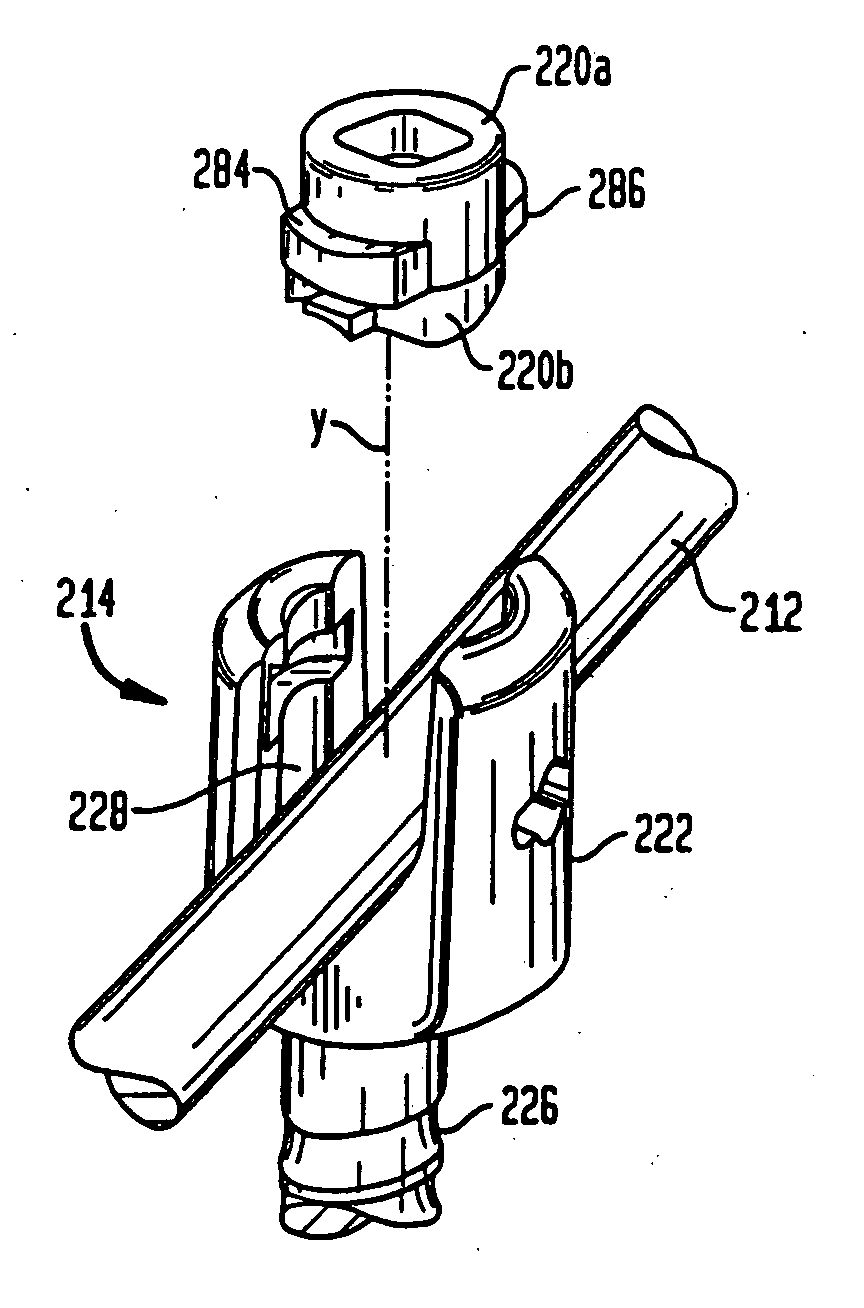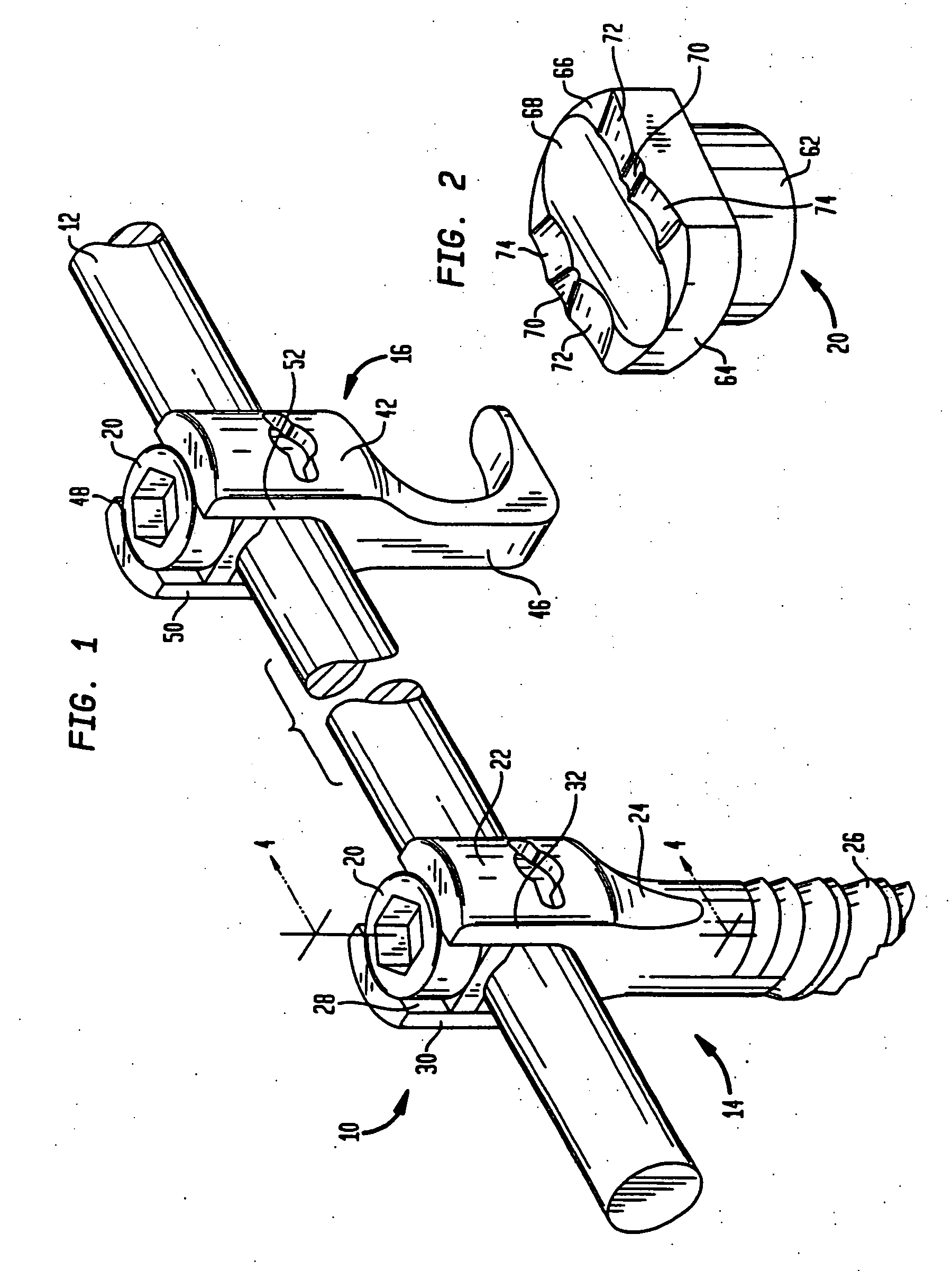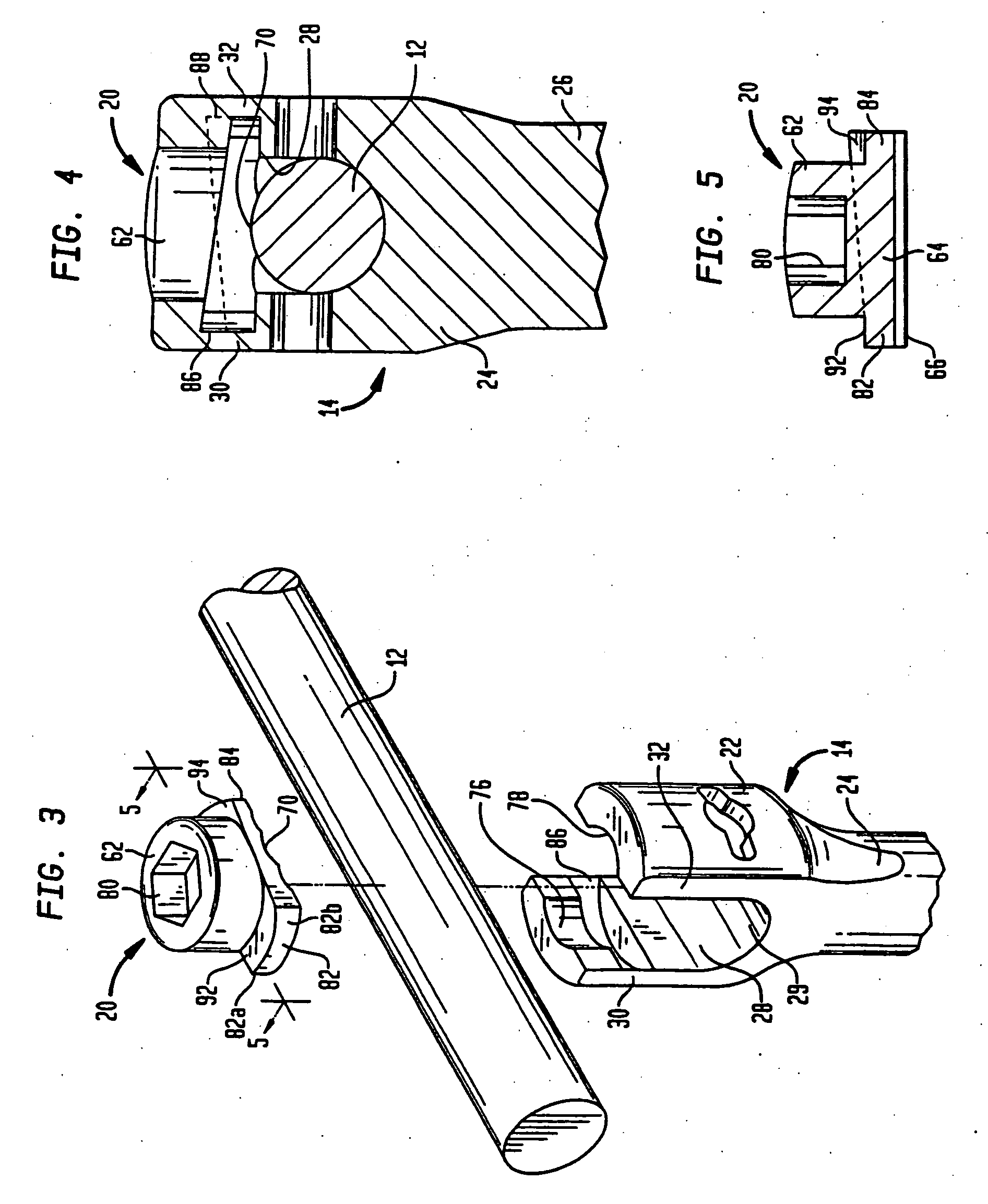Methods for securing spinal rods
a technology of spinal rods and screws, applied in the field of spinal rods secured, can solve the problems of damage to the fastener and the connective device with which it is associated, and limiting the range of motion of the spine, so as to facilitate the relative rotation of the two parts
- Summary
- Abstract
- Description
- Claims
- Application Information
AI Technical Summary
Benefits of technology
Problems solved by technology
Method used
Image
Examples
Embodiment Construction
[0044] Referring now to the drawings wherein like reference numerals identify similar structural elements of the subject apparatus, there is illustrated in FIG. 1 a section of a spinal stabilization system constructed in accordance with a preferred embodiment of the subject disclosure and designated generally by reference numeral 10.
[0045] Referring to FIG. 1, spinal stabilization system 10 includes an elongated spinal rod 12 having a circular cross-section and a substantially smooth outer surface finish. As illustrated, fastening devices in the form of a bone screw 14 and right-angle hook 16 are provided for securing spinal rod 12 to the spine during a spinal stabilization procedure. Both fastening devices employ a novel top-loaded locking cap, designated generally by reference numeral 20, which will be described in greater detail hereinbelow with reference to FIG. 2. The novel locking cap achieves significant clinical advantages over the prior art through its reliability and the ...
PUM
 Login to View More
Login to View More Abstract
Description
Claims
Application Information
 Login to View More
Login to View More - R&D
- Intellectual Property
- Life Sciences
- Materials
- Tech Scout
- Unparalleled Data Quality
- Higher Quality Content
- 60% Fewer Hallucinations
Browse by: Latest US Patents, China's latest patents, Technical Efficacy Thesaurus, Application Domain, Technology Topic, Popular Technical Reports.
© 2025 PatSnap. All rights reserved.Legal|Privacy policy|Modern Slavery Act Transparency Statement|Sitemap|About US| Contact US: help@patsnap.com



